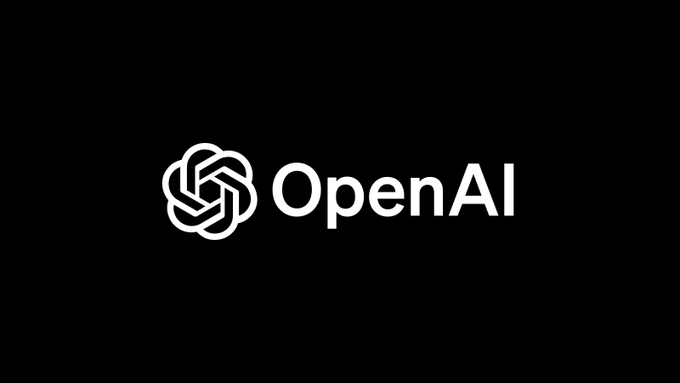![]() The edge of tomorrow is a rapidly changing environment where existing technologies evolve at a breakneck speed, tumbling into an unknown future. Watching this phenomenon, some wise men said “There are decades when nothing happens, and weeks when decades happen”. What they mean is, although something or the other keeps happening at the edge, sometimes, in a short time, something big happens that it changes the nature of the core itself. We are living in such times where the potential for transformation is extremely high with groundbreaking technologies like AI, Robots and Nano Satellites. These technologies are perfectly poised to completely change the nature of existing technology’s core itself. This week’s collection of updates are proof that this is true. Let’s begin.
The edge of tomorrow is a rapidly changing environment where existing technologies evolve at a breakneck speed, tumbling into an unknown future. Watching this phenomenon, some wise men said “There are decades when nothing happens, and weeks when decades happen”. What they mean is, although something or the other keeps happening at the edge, sometimes, in a short time, something big happens that it changes the nature of the core itself. We are living in such times where the potential for transformation is extremely high with groundbreaking technologies like AI, Robots and Nano Satellites. These technologies are perfectly poised to completely change the nature of existing technology’s core itself. This week’s collection of updates are proof that this is true. Let’s begin.
 Hardware from AI companies?
Hardware from AI companies?
When we hear the term “Silicon Valley” today, we are reminded of major tech companies like Google/Meta or like in the popular TV show with the same name, we hear about countless startups like Airbnb, Uber etc or more recently, Open AI, Perplexity and Midjourney in the field of AI. Apart from Apple, we barely hear about any hardware-related operations from the mega-attractive region which current day tech entrepreneurs call home. But it seems like it’s about to change. Perplexity’s co-founder Aravind Srinivas (IIT Madras Alumni) tweeted an image that looked like a smartphone with a camera lens covered by a shutter. This made a lot of people speculate whether Perplexity, the top AI-based search engine right now, is entering the seemingly unconquerable realm of hardware. What’s crazier is, this is not a news that broke in isolation. Midjourney, the top GenAI tool to create extremely aesthetic and realistic images, tweeted to confirm that they are “officially getting into hardware”. What kind of hardware? People got curious and asked whether it is going to be a pendant, to which Midjourney replied in the negative. In another tweet the company responded by saying “Is it wearable if you have to go inside of it?”. So, is it going to be in the field of AR/VR? Seems highly likely because it was found that Midjourney hired an ex-Apple Vision engineer to their team, which is working on some kind of a world simulation headset. Meanwhile, Perplexity might take a leaf out of the Rabbit R1 playbook and create a camera that can see and explain everything without the need for prompting. Wild guesses are high at this point in time, but the transition that software-focused silicon valley is making towards tangible hardware is quite a welcome move, don’t you think? Some refreshing hardware might be upon us next year.
 Humanoid Robot is wearing clothes and helping humans?
Humanoid Robot is wearing clothes and helping humans?
1x tech, a company based in the San Francisco Bay Area, is building “humanoids for home“. Unlike many other companies that are building warehouse robots, like Figure, or factory bots, like Unitree G1, 1x is building a human companion. Which makes sense if you consider the falling birth rates all over the world, with an ageing population highly likely to live their last few years alone. So, the Neo 1x seems to be the solution to this kind of loneliness. There are quite a few differences in how this humanoid is designed. They broke their stealth mode today by releasing a video of their latest humanoid the “Neo”. Neo is designed for humans, built for the home, the company claims. It looks much different from the Unitree or Figure in a key way, it is clothed and has muscle-like features, which the company wants to keep a secret. Lots of comments wanted to claim that it is a human acting like a robot in those videos, but the company said that their robot will be clothed to provide “strong and gentle” features for a human who is not used to hard steel machines. This humanoid is 5.4 ft tall, pretty much in the human range, weighs 66 pounds (30 kilograms), can walk at 4 kmph speed, run at 12 kmph speed, can carry around 20Kgs of weights, and can be untethered on a battery charge of around 2 to 4 hours, as claimed on the company’s product pages. The Neo can understand natural language and physical space with its variety of sensors, has highly dexterous hands and can mimic human actions through learning. The company behind Neo (1x Tech) has been building humanoids for quite a while now, with EVE, their earlier bot which could already accomplish a lot of things autonomously. The Neo is the next step, their next milestone. Surely, the robotics space is heating up with a ton of competition but it remains to be seen how well they will be received by homes, because as far as the market response goes, businesses are still more interested than everyday consumers. Time will tell whether Neo is step in the right direction or not, yeah?
 OpenAI partners with FBI?
OpenAI partners with FBI?
While there is still no word on a solid release date for full roll-out of advanced voice or their famed video model Sora, some rather worrying updates have come to the fore. First is a tweet from CEO Sam Altman that confirms earlier suspicions that “safety” will stop the rapid evolution of AI. The tweet says that OpenAI has reached an agreement with the “US AI Safety Institute” which is a national level body that will require audits before companies like OpenAI can release their models to the public. Surely, safety is a vague word that encapsulates so many unknowns at this stage, primarily because Artificial Intelligence based on Large Language Models is a nascent space with very few companies at play, which certainly can, and already demostrated the ability to make changes where needed. Classic case was the last week release of Grok which initially had some teething censor issues in its new GenAI feature, but promptly, those were fixed and now no one is complaining. It’s also known as self-regulation. But it seems like some deal has been made with a central authority, which has irked a lot of people. Central regulation, which is still just centered around the US seems like a pathway to UN regulations, which is certainly an unwanted bureaucratic block for such a small and nascent industry of LLMs. This news got worse with another report from the Information (paywalled), which claims that the next version of GPT from OpenAI is already under a vetting process from the Federal Bureau of Investigation in the USA. It seems like the current US Government, and its FBI director Christopher Wray are taking a big interest in the development of AI and most likely they are working out ways to start public debates and awareness campaigns. Most recently, it has been revealed that Sam Altman will participate in a show by celebrity Oprah Winfrey to discuss the AI era along with Bill Gates, MKBHD and well, FBI director Christopher Wray. It is high time that nations around the world, follow the footsteps of China and make their own firewalls, because the fire of regulations is already lit and USA is leading the charge. Let’s see how it goes. Next week, we will have more.
This article is brought to you in partnership with Truetalks Community by Truecaller, a dynamic, interactive network that enhances communication safety and efficiency. https://community.truecaller.com
 Sunlight at night, from a satellite?
Sunlight at night, from a satellite?
Yes, this extremely interesting idea and conception is from a radical company called “Reflect Orbital” based in Los Angeles, California. “Light” and “Energy” are their two products. It’s kind of wild to even stop to think about this idea. Can you imagine a scenario in which you have an app your phone which can, with just a toggle switch, turn on a bright source of light in space? This company actually has plans to send satellites up in the orbit, with huge mirrors that can reflect the sun to your area at night. If you require just light, you can get light. If you want energy and have your solar panels lit up at night, even more mirrors will be deployed to provide “energy” during the night. The core idea is to service solar farms that require all-day energy transfer. It is also solving a key problem in which the world is at a cross roads in choosing what kind of energy to go forward with. It has to be green energy but it also has to provide more energy than the conventional solar. Reflect Orbital’s solution might provide a solid step in the direction towards energy independence that is completely solar. Of course, a lot of details are still to be worked out by this company, like how to actually make it work when there are clouds, perhaps? India is blessed with sunlight all round the year, with tropical weather. We might not require it much but there are countries where sunlight is rare, like Norway. May be this solution could work really well there, right? We will keep following these updates and make sure to tell you what’s happening in this field.
 AI that can remember hundreds of novels?
AI that can remember hundreds of novels?
MagicAI, a team that is hard at work in the field of LLMs, hails from San Francisco Bay Area. They are working on “AGI” also known as Artificial General Intelligence, which includes “reasoning” and autonomous activity as its primary goals. This company has recently partnered with Google Cloud to launch something massive. Literally massive, because their latest research deployment is a 100 million token context window, for their “Long Term Memory” models. Focused primarily on sofware development, their models are trained on huge sets of libraries, functions and documentation that are required to aid “agentic” software development. LTM-2-Mini is their latest model, which has a 100 million token context window, which roughly means that it can successfully hold a memory of 100 million characters that have been given to it as input. Imagine about 750 novels being fed into the LLM for training. It can read it in one go and remember all of it. This groundbreaking development surpasses the previous lead of 10 million token context window by Google Deepmind. What does this mean to users like us? It means the LLM will be able to remember much more and answer with much deeper contexts. How it will actually result in compute power requirements is currently unknown and mind boggling to say the least, which tells us why they had to partner with a massive company like Google. Autonomous agents tasked with highly complex tasks, like say, research a massive topic of interest, or how to solve a particular math problem, can now take advantage of a huge internal context window and do their work without losing memory. This is the result of such a news. And 100 million token context will look small, when people figure out how to do 1 billion, right? Currently, the major lacking feature in LLMs is the context window, and companies like Magic AI are out there solving it. It’s scary and exciting at the same time.
 GenAI for making T-Shirts?
GenAI for making T-Shirts?
Some Tiruppur manufacturers will be really happy to read this news because there is now an exclusive GenAI platform for creating T-shirt designs at scale, and with maximum randomness possible. “Playground AI” a is a start-up by Suhail, a popular enterpreneur well known in the realms of X. Without any wait list, he has launched the latest version of Playground which will let any one “Design anything like a Pro”. While he teases a radically revamped foundation model will be released in the coming weeks, this GenAI platform has long been hailed as a simple and powerful alternative to more complex solutions like Midjourney that require extensive prompting help. With Playground’s latest version, one can create “designs” rather than just images. Means, it will be heavily used with text, logos and banners that are kind of a given with all kinds of digital designs these days. Also interesting is the emphasis on T-Shirt designs, as we very well know, it is the leading market for clothes in any part of the world. People who wish to make their own designs can already make an account and start trying, let us know if you try it out!
 Reliance and Jio’s promise for the future is “deep tech”?
Reliance and Jio’s promise for the future is “deep tech”?
Recently, the Jio “Annual General Meeting” happened where a lot of announcements were made, as a forward looking commitment to the future of the group’s companies. AGMs are usually for the employees and the shareholders, but this time, an interesting comment has made news across the tech world, with an important word being thrown around “deep tech”. To understand deep tech, lets take an example of batteries. Currently we are using majorly “Lithium-Ion” based solutions for our smartphones. The major problem for this solution is the “mining” of it which is highly damaging to the earth’s crust and for the workers as well. While deposits have recently been found in India, much needs to happen at the refinery level before we can claim even a bit of independence, but imagine if scientists can find a way to completely side step the need for Lithium and may be develop an alternate eco-sensitive solution? They might need a lot of time and support, which could translate to huge labs, rare equipment, big travels to places all around the world and debates with peers. This is called “deep tech research” and it is much needed for any nation which wants to become “self reliant” in any field. Of course, it requires a lot of sacrificial money. Who will fund all this? The government can do only a bit. It has been a demand with the private industry to take up a chunk of it, and this is exactly what Reliance and Jio have promised to do. They have promised to fund the scientists who will be working on problems that are currently unsolvable or inefficient. This is how solar panels were invented, this is how smartphones were invented. Name any invention, they would have come from the support of large benevolent institutions, of which the government is the largest. This time, a large industrial entity is stepping up. Already Reliance has 1000s of scientists working for it, with 2.5k patents already filed. They are going to increase the funding towards these “deep tech” projects which literally mean “deep pockets for literally free money” towards a future where all our current problems are solved. Good move? Yes, but not big enough, claimed some experts, as they said that Reliance still relies on importing its tech products from China and selling them here, so far. We think it will take a lot more time to reach parity with innovative nations like the USA or Japan or China or even France and Germany. More funding to scientists who are working on moonshot projects is definitely a welcome move and the Government of India should rather bolster this program with more incentives in the coming years. We shall wait and watch.
And that is it for this week, from our team here at FoneArena. Trying to keep up with this world is tough, so don’t forget to come back next week, where there will be more new updates from us. Until then, see ya!
